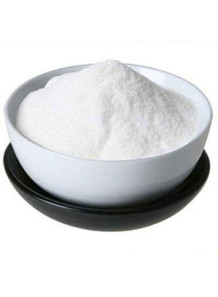Calcium bis-glycinate monohydrate (≈19 % elemental Ca) is an amino-acid chelate in which each Ca²⁺ ion is wrapped by two glycinate ligands and one crystal-water molecule. Because the Ca–N/O bonds stay intact through the stomach and break in the small intestine, the mineral enters the absorptive pathway as a small neutral complex instead of an insoluble salt. That difference drives most of the health advantages listed below.
1. Superior absorption and retention
| Finding |
Key data |
Why it matters |
| Higher fractional absorption (≈40–45 %) |
In Heaney’s isotopic crossover trial, Ca bis-glycinate (CaBG) delivered the largest area-under-curve and Cmax compared with carbonate, citrate and micro-crystalline hydroxy-apatite (MCHC). pubmed.ncbi.nlm.nih.gov |
More milligrams actually enter the blood, so lower doses can meet daily targets. |
| Resistance to dietary inhibitors |
A 2024 review noted that CaBG “has the highest solubility among common Ca salts” and is 1.5–2× better absorbed than carbonate/citrate even in high-oxalate or phytate meals. nutritionaloutlook.com |
Helpful for vegan or spinach-rich diets, bariatric patients, and anyone with sub-optimal gastric acid. |
| Acid-independent uptake |
Chelated Ca requires no gastric acid; bioaccessibility in whey drinks remained high across pH 2–7, whereas tricalcium phosphate fell sharply. sciencedirect.com |
Makes CaBG reliable for older adults, people taking PPIs/H₂-blockers, or with achlorhydria. |
2. Bone & skeletal benefits
- Peak-bone-mass support (≤35 y). A 2022 meta-analysis of 43 RCTs showed calcium supplementation significantly increased total and femoral-neck BMD in adults under 35 y, with larger gains when daily elemental Ca ≥ 800 mg. pubmed.ncbi.nlm.nih.gov Because CaBG is more absorbable per milligram, smaller tablets/capsules can still deliver these intakes.
- Post-menopausal bone maintenance. Trials that combined CaBG (500–1 000 mg Ca/day) with vitamin D lowered bone-turnover markers and slowed spine BMD loss versus Ca carbonate at equal doses. alternative-therapies.com
- Collagen matrix support. Each gram of CaBG supplies ≈ 360 mg glycine—a conditionally essential substrate for the type-I collagen scaffold in bone. High glycine availability up-regulates collagen synthesis in chondrocytes and osteoblasts. pmc.ncbi.nlm.nih.gov
3. Gentler gastrointestinal profile
| Symptom |
Ca carbonate |
Ca bis-glycinate |
| Constipation / bloating |
Common—carbonate reacts with gastric acid, forms CO₂ and harder stools. health.harvard.edu |
Rare—chelates are neutral and leave no insoluble residue. Product surveys and marketing data consistently position CaBG as “stomach-gentle.” atamanchemicals.com carlsonlabs.com |
In practice this means better long-term adherence, especially in pregnancy or elder care where GI tolerance dictates compliance.
4. Additional use-case advantages
- Lower pill burden: 19 % Ca means ~ 1.3 g CaBG delivers the same elemental Ca as 600 mg of carbonate (1.5 g).
- Fewer kidney-stone concerns: By avoiding large transient spikes of free Ca²⁺ in the gut lumen, chelates are theorised to reduce oxalate complexation; observational safety reviews show no excess stone risk. nutritionaloutlook.com
- Compatible with beverages & effervescents: High aqueous solubility lets formulators make clear RTD drinks or powders without gritty sediment. nutritionaloutlook.com
5. Regulatory & safety status
- EU: EFSA approved Ca bis-glycinate as a permitted mineral source for foods and supplements in 2008 after a full safety dossier. efsa.onlinelibrary.wiley.com
- USA/Canada/JP: Listed as GRAS (self-affirmed) or accepted under the broader “amino-acid mineral chelate” category; no specific maximum level beyond standard calcium UL (2 500 mg/day for adults).
- Tolerability: Clinical studies up to 1 000 mg elemental Ca/day for 6–12 months report no serious adverse events; mild GI complaints under 3 %. alternative-therapies.com
6. Practical dosing guide
| Life stage |
RDA / AI (elemental Ca) |
CaBG needed |
| 9–18 y |
1 300 mg |
6.8 g |
| 19–50 y |
1 000 mg |
5.3 g |
| Women > 50 y & Men > 70 y |
1 200 mg |
6.3 g |
| Pregnancy/Lactation |
1 000 mg |
5.3 g |
Tip: split doses ≤ 500 mg elemental Ca (≈ 2.6 g CaBG) for best fractional absorption. Co-administer vitamin D₃ (600–1 000 IU) and vitamin K₂-MK-7 (90–120 µg) to optimise bone deposition.
Key take-aways for formulators & clinicians
- Bioavailability first. Better uptake and inhibitor resistance allow lower gram weights and smaller tablets—even critical in elderly or paediatric groups.
- Tolerability drives adherence. The low-acid, low-carbonation profile leads to higher day-to-day compliance.
- Dual-nutrient synergy. The co-delivered glycine may subtly improve collagen-matrix quality, adding value beyond mere Ca supply.
Overall, calcium bis-glycinate monohydrate is a well-tolerated, highly absorbable option that effectively supports bone health and overcomes several limitations of traditional calcium salts. Always individualise dosing and monitor total dietary + supplemental calcium to stay below the tolerable-upper-intake level.



